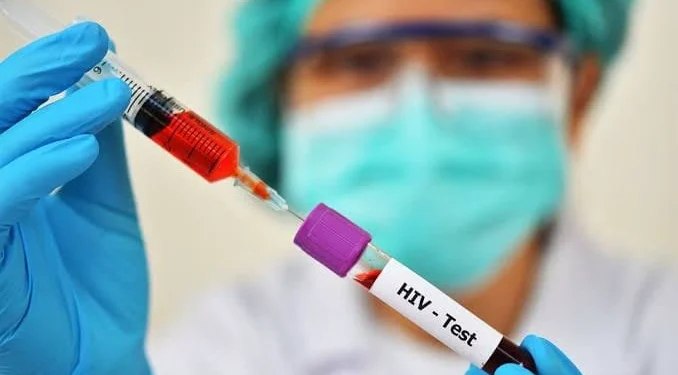In 2025, Africa continues to carry the world’s heaviest burden of HIV, despite decades of global campaigns, awareness drives, and medical breakthroughs in treatment. While progress has been made in reducing new infections and extending the lives of those already living with the virus, the numbers remain deeply concerning.
According to recent health reports, more than half of the world’s HIV cases are concentrated in sub-Saharan Africa. Some countries show declining rates, but because of large populations and entrenched epidemics, they still record staggering numbers of people living with the virus. Below is a closer look at the ten African countries with the highest absolute number of people living with HIV in 2025, alongside the challenges and responses shaping the epidemic.
1. South Africa – Around 7.7 million people
South Africa remains the global epicenter of HIV. With nearly 7.7 million people living with the virus, no other country comes close in sheer numbers. Decades of political, social, and economic factors have left deep scars, but South Africa also stands out for building one of the world’s largest HIV treatment programs. Millions of people now access free antiretroviral therapy (ART) through public clinics. Even so, infection rates remain high, and young women continue to be disproportionately affected.
2. Mozambique – Around 2.4 million people
Mozambique holds the second spot with roughly 2.4 million people living with HIV. The epidemic here has been fueled by poverty, weak health infrastructure, and ongoing instability in parts of the country. International organizations and local NGOs continue to scale up testing and treatment, but many rural areas still face challenges in accessing these services. For women, especially those in poor communities, vulnerability remains severe due to cultural and economic inequalities.
3. Nigeria – Around 1.7 million people
Nigeria, Africa’s most populous nation, has the largest HIV burden in West Africa with about 1.7 million people living with the virus. While the country’s overall HIV prevalence rate is lower than in southern Africa, its massive population size keeps the total number high. Stigma, cultural barriers, and underfunded healthcare systems have challenged Nigeria’s fight against HIV. Yet, progress is visible: improved testing and ART expansion have reduced new infections compared to a decade ago.
4. Uganda – Around 1.5 million people
Uganda has long been seen as both a warning and an example in Africa’s HIV history. In the 1990s, Uganda was hailed for successfully reducing infection rates through strong public campaigns. But the country still counts about 1.5 million people living with HIV in 2025. Population growth, inconsistent prevention efforts, and social dynamics have kept the epidemic alive. Still, Uganda has a robust network of clinics that provide lifesaving medication, and many international donors continue to support programs there.
5. Kenya – Around 1.4 million people
Kenya follows closely with 1.4 million people living with HIV. Nairobi and Kisumu are among the cities hardest hit, but infections affect both rural and urban populations. Kenya has invested heavily in prevention of mother-to-child transmission (PMTCT) programs, which have saved thousands of children from being born HIV positive. However, stigma remains a significant problem, especially in conservative communities where open discussion about sexual health is discouraged.
6. Zambia – Around 1.3 million people
Zambia, with around 1.3 million people infected, continues to battle high infection rates. The mining towns and transport corridors have historically seen higher cases due to mobile populations and risky behaviors. In recent years, Zambia has made significant progress in providing free ART and in educating young people about prevention. Still, rural areas often face shortages of drugs and trained health workers, making consistent treatment difficult for many.
7. Zimbabwe – Around 1.3 million people
Zimbabwe also records about 1.3 million people living with HIV. Despite economic turmoil over the past decades, the country has made remarkable progress in lowering HIV prevalence and ensuring wide ART coverage. Community groups have played a key role in offering support to families and fighting stigma. Yet, the large number of people already infected keeps the overall burden high, and economic hardships continue to slow down progress.
8. Malawi – Around 980,000 people
Malawi, with nearly one million people living with HIV, has one of the highest prevalence rates in the world. That means a very large share of its relatively small population is infected. The government, in partnership with global donors, has rolled out free ART to almost everyone who needs it, and many lives have been saved. But social stigma, teenage pregnancies, and poverty remain driving forces that make young women especially vulnerable.
9. Ethiopia – Around 610,000 people
Ethiopia has a smaller prevalence rate compared to southern Africa, but because of its vast population, it still records more than 600,000 people living with HIV. The country has focused on scaling up awareness and testing, especially in urban centers like Addis Ababa. However, conflict and instability in certain regions have disrupted health services, making it difficult for people in war-torn areas to access consistent medication.
10. Democratic Republic of the Congo (DRC) – Around 520,000 people
The DRC closes the list with about 520,000 people living with HIV. The country’s struggles with political unrest, displacement, and a weak healthcare system have made it difficult to fight the epidemic. Rural communities, in particular, have limited access to clinics and testing. While donor programs have stepped in, insecurity in several provinces has slowed down progress.
The Bigger Picture
Across Africa, an estimated 25 million people live with HIV in 2025. Southern and eastern Africa account for the largest share. While treatment programs have saved countless lives, the epidemic continues to cost countries billions of dollars in lost productivity, healthcare spending, and human potential.
The message from experts is clear: investment in prevention, open discussion about sexual health, and reliable access to treatment remain the most effective tools. Without sustained commitment, the numbers may stay high for years to come.
